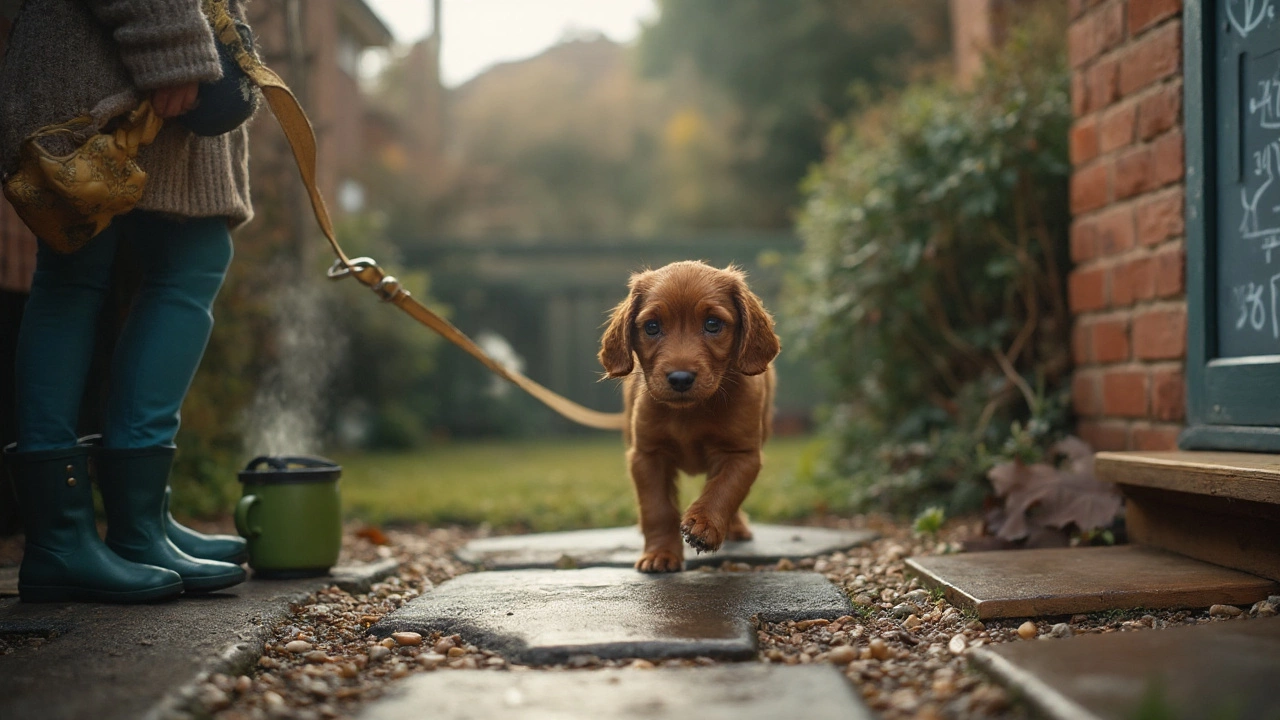Puppy Potty Training Timeline: What to Expect and How to Succeed
Got a new puppy and wonder when they’ll stop having accidents? The answer isn’t “one size fits all,” but a simple timeline can keep you on track. Below is a straightforward plan that works for most breeds. Follow the schedule, stay consistent, and you’ll see big progress in just a few weeks.
Week‑by‑Week Potty Plan
Week 1 – Set the Stage
Start by choosing a single spot outside for bathroom breaks. Take your pup there first thing in the morning, after meals, after play, and before bedtime. Keep a close eye on signals – sniffing, circling, or sudden stillness. When you see them, rush outside and praise loudly. A quick “Good job!” helps them link the spot with a reward.
Week 2 – Build a Routine
Now you should be taking them out 4‑5 times a day. Keep a log of feeding times and bathroom breaks. The more predictable the routine, the faster the bladder learns. If an accident happens, clean it with an enzymatic cleaner so the smell disappears – otherwise they’ll think it’s okay to go again.
Week 3 – Crate Introduction
Begin using a crate that’s just big enough for the pup to stand, turn around, and lie down. Dogs naturally avoid soiling where they sleep. Put the crate in a quiet part of the house, and let them nap there for short periods. Take them out immediately after opening the crate.
Week 4 – Extend Outdoor Time
Increase the time between bathroom trips by about 15‑30 minutes each day. Watch for “pre‑potty” signs and act fast. If they hold it longer without accidents, you’re training their bladder capacity.
Week 5‑6 – Reduce Supervision
Start granting short freedom in a puppy‑proofed room. Keep a baby gate or playpen handy. If they manage the space without accidents, gradually give them more room. Still, keep the crate as a fallback for naps.
Common Hurdles and Quick Fixes
Accidents at Night
Many puppies need a bathroom break once or twice after dark. Keep a night‑light near the door and a small water bowl outside the crate. A quick trip to the yard right before you go to bed can prevent midnight messes.
Going Inside After Play
Excitement can mask the need to go. After any play session, pause for a minute, then lead them out. A short “potty break” after fun reinforces the habit.
Stubborn Spotting
If your pup keeps choosing a corner inside, block that area with a baby gate or place a rug with a strong scent they dislike. Pair the block with a reward for going outside.
Remember, consistency beats perfection. If you miss a step, just get back on schedule the next day. Puppies bounce back quickly when the routine is steady.
By week 6 most pups are handling the basics: they know when to go, they can hold a bit longer, and they trust the crate for sleep. Keep the praise genuine, the cleaning thorough, and the schedule regular. Before you know it, you’ll have a dry house and a happy, confident puppy.
Posted By Bryndle Redding On 7 Sep 2025 Comments (0)
How Long Does It Take to Potty Train a Puppy? Real Timeline, Schedules, and Fixes
Real potty training timelines: what to expect by age, daily schedules, setbacks, and fixes. Clear steps, checklists, and FAQs for new puppy parents.
READ MORE